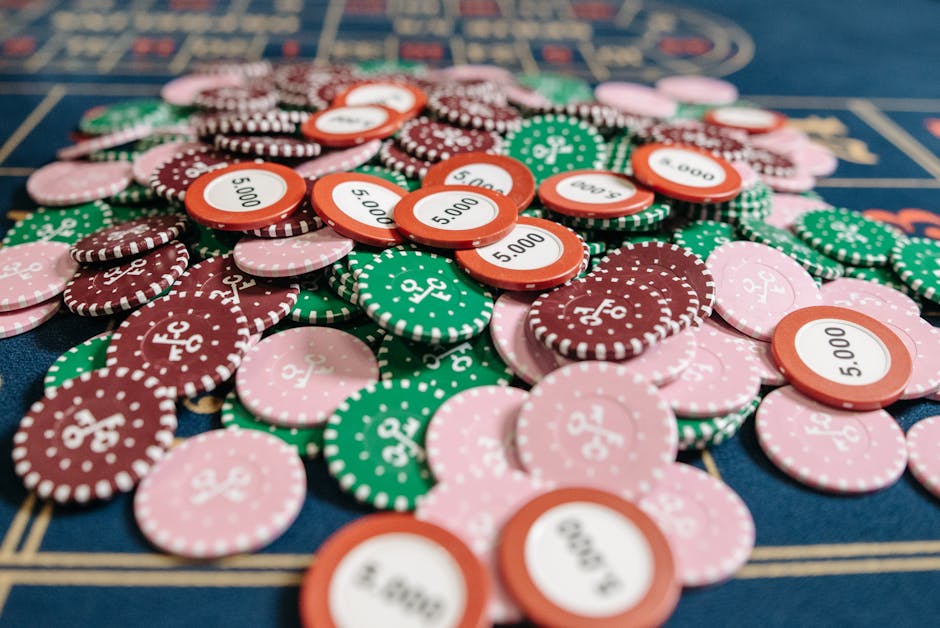Know Your Bankroll, Know Your Limits
First off, let’s define what a poker bankroll actually is. It’s the money you’ve set aside exclusively for playing poker. Not your rent money, not your grocery budget this is cash specifically earmarked for the felt. Whether you’re playing home games, online, or at the casino, your bankroll is your financial buffer against variance, tilt, and bad beats.
Why keep it separate from your daily finances? Because mixing the two is a fast road to stress and bad decisions. One tilt session shouldn’t cost you next month’s phone bill. When your poker funds live in their own space, mentally and logistically, you’re more likely to make level headed calls. It lets you approach the game like a business, not a gamble.
As for where to start? Your starting bankroll should match both your income level and the stakes you’re playing. Recreational players running low stakes games might be fine setting aside a few hundred bucks. If you’re taking poker more seriously, look at your average buy in and multiply it 20 to 30 buy ins is common for cash games, more for tournaments. Only commit what you can afford to lose, and never let your ego pick the stakes. Your bankroll size should always back your ambitions, not the other way around.
Choose the Right Game Formats
Managing your poker bankroll starts with choosing the right type of game. Cash games and tournaments don’t just differ in structure they also impact your bankroll in very different ways. Understanding these distinctions helps you decide where to play and how much to risk.
Cash Games vs. Tournaments: What’s the Difference?
Each format requires a distinct bankroll strategy:
Cash Games:
You buy in for a fixed amount and can leave the table at any time.
Variance tends to be lower than in tournaments.
Losses and wins accumulate more gradually.
Tournaments:
You pay a one time entry fee and play until you’re eliminated or win.
Variance is higher due to the winner takes most payout structure.
It’s possible to go many games between significant wins.
Recommended Bankroll Sizes
How much should you set aside for each format? It depends on your risk tolerance and game stakes, but here are some common guidelines:
Cash Games:
Maintain a bankroll of at least 20 30 buy ins for the level you’re playing
Example: Playing $1/$2? One buy in = $200. You’d need a $4,000 $6,000 bankroll
Tournaments:
Due to higher variance, keep 50 100 buy ins in your bankroll
Example: Playing $50 tournaments? You’d want at least $2,500 $5,000 set aside
This buffer protects you from natural variance and gives you room to grow.
When to Move Up (or Down) in Stakes
Knowing when to adjust your stakes is crucial to long term bankroll health:
Move up if:
You’ve comfortably exceeded the required buy ins at your current level
Your game is consistently profitable over a large sample size
Move down if:
You lose more than 20 30% of your bankroll
You’re experiencing a downswing that affects your confidence
Staying flexible ensures you can ride out challenges and capitalize on your strengths without going broke.
Remember: growing your bankroll is a marathon, not a sprint. Choose formats wisely, align your stakes with your bankroll, and adjust as needed to stay in the game.
Variance Isn’t Just Luck
Variance is what makes poker exciting and brutal. You can play perfect hands for hours and still lose. You can get lucky for a week playing poorly and win. That’s variance. It’s the swing between expected value and real life results. And if you don’t respect it, it will wreck your bankroll.
Downswings are part of the game. That doesn’t mean they’re easy. A long stretch of bad beats can rattle even seasoned players. The key is staying off tilt. When emotion takes over, smart decisions disappear fast. Stop chasing losses. Don’t jump limits. Take a break if you have to, but don’t let a cold run push you into desperation mode.
A few smart rules can help you survive the swings. Always stick to appropriate stakes for your bankroll. Stop loss rules keep a rough day from becoming a disaster set a daily loss limit and walk away when you hit it. Diversify what you play to smooth out the bumps; maybe mix in some lower variance formats like Sit & Gos. Above all, stay honest with yourself: track your results and know when your A game isn’t showing up.
Poker isn’t about never losing it’s about staying in the game long enough to win.
Stay Disciplined, Especially After a Win

One of the fastest ways to burn through a bankroll is to let a good streak go to your head. You win big at your regular stakes and suddenly feel invincible so you take a shot at a higher stakes game. Then, one cooler or bad beat later, you’re back where you started (or worse). It’s tempting. But it’s not smart.
The best players stick to consistent game selection, no matter how hot they’re running. Staying within your planned stakes keeps variance manageable and your risk in check. A big win isn’t a green light to gamble bigger it’s a sign your discipline is working. Keep the same buy ins and keep grinding.
Consider using stop loss and win stop limits. A stop loss is the amount you’re willing to lose in a session before walking away (say, three buy ins). A win stop works the same on the profit side you hit a certain win target, then lock it in. Both help you avoid emotional swings and keep your bankroll intact for the long game.
Track Everything
Staying on top of your bankroll starts with one simple habit: tracking. Without clear visibility into your wins, losses, and performance over time, you’re flying blind. Good tracking isn’t just about bookkeeping it’s about strategy, awareness, and long term success.
Why Tracking Matters
Keeping a consistent log of your poker sessions allows you to:
Spot patterns in your play (both good and bad)
Measure your progress toward goals
Adjust your strategy based on real data
Maintain accountability to your bankroll goals
Whether you’re playing low stakes cash games or entering online tournaments, the numbers tell the truth.
What to Track
To make tracking meaningful, focus on key metrics:
Win/Loss per session: Know how much you’re profiting or losing
Hourly rate: For cash games, this reveals how well you’re performing over time
Buy ins and cash outs: Manage how much you’re putting in and pulling out
Stakes played: Helps identify which levels you’re beating consistently
Emotional or strategic notes: Brief reflections can help diagnose deeper problems later
Tools and Apps to Boost Your Tracking Game
Don’t rely on scraps of paper or memory. These tools make bankroll tracking easier and smarter:
Poker Bankroll Tracker (App): User friendly, mobile, and made for beginners
Hold’em Manager / PokerTracker: Powerful software for online grinders
RunGood: Clean interface with simple session logging and charts
Spreadsheets (Google Sheets or Excel): Fully customizable if you prefer full control
Find a system that fits your play style and commit to using it regularly.
The Motivation Factor
Tracking your bankroll isn’t just practical it’s psychological fuel. Seeing your growth over time can:
Keep you grounded during downswings
Reinforce healthy habits when you’re winning
Help you stay focused on long term goals
A well tracked bankroll turns poker from a gamble into a strategic pursuit. Stay consistent, and let the data drive decisions.
Don’t Let Emotions Drain Your Stack
Tilt is the silent bankroll killer. One bad beat, a cooler hand, or an arrogant opponent can flip your mindset and wreck hours of solid play in minutes. Emotional decisions lead to poor calls, reckless bluffs, and stakes that your bankroll can’t support. It’s not just about losing a hand it’s about losing your discipline.
Cool downs matter. After a tough session, take a break. Walk, breathe, write it out whatever helps you lower the heat. Some players rely on post game journaling or short meditations before logging back in. Others set hard reset rules like “no back to back sessions after a loss” or “mandatory 30 minute pause after losing 3 buy ins.”
The point is: protect your mental game like you protect your chips. Poker is long term. Each decision matters, and you play best when your head’s clear. Bad emotions make bankrolls bleed. Beat tilt before it gets to your stack.
Want more on avoiding tilt and emotional errors? Read: common poker mistakes.
Bankroll Wisdom That Pays Off
If you’re new to poker, learning to manage your bankroll isn’t optional it’s survival. The first rule is simple: never play with money you can’t afford to lose. Your bankroll should be separate from your living expenses. If it’s not, you’re gambling with rent money, not playing poker.
Stick to proven bankroll guidelines. For cash games, keep at least 20 30 buy ins in reserve. For tournaments, think bigger 50 to 100 buy ins minimum. This buffer helps you ride out losing streaks without going broke. Don’t ignore this. Even great players go through downswings.
Keep your stakes in check. Just because you had a big win doesn’t mean it’s time to jump into high stakes games. Stay within your bankroll limits and move up slowly. Protect the foundation before trying to level up the house.
Finally, remember this: your bankroll isn’t about luck. It’s leverage. Used properly, it keeps you in the game long enough to let your skill pay off. Used carelessly, it disappears and takes your confidence with it.

 Danny Stark brought technical expertise to the forefront by designing and optimizing the platform’s architecture to ensure smooth performance. From streamlining user interfaces to implementing responsive features, Danny focused on delivering a fast and seamless experience for visitors across all devices. His work behind the scenes ensured Bet Roll Gamble operates efficiently under high traffic, providing users with uninterrupted access to content and tools.
Danny Stark brought technical expertise to the forefront by designing and optimizing the platform’s architecture to ensure smooth performance. From streamlining user interfaces to implementing responsive features, Danny focused on delivering a fast and seamless experience for visitors across all devices. His work behind the scenes ensured Bet Roll Gamble operates efficiently under high traffic, providing users with uninterrupted access to content and tools.